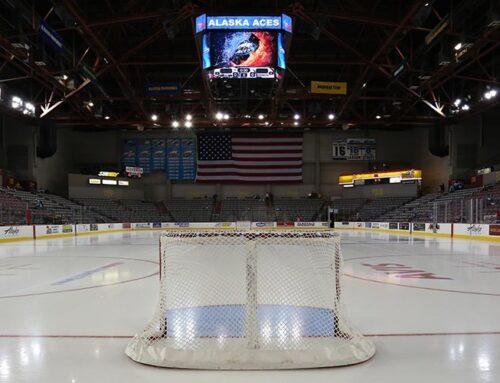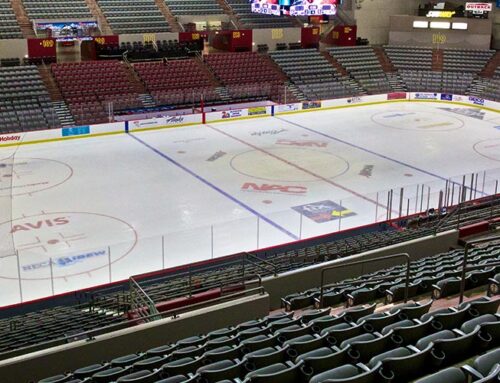Which Refrigerants Are Typically Used in Ice Rink Applications?
Traditionally, most ice rink operators using chillers as their refrigeration system have used ammonia as a primary refrigerant coupled with a brine or glycol as a secondary refrigerant. Within the past decade, carbon dioxide (CO2), a very common and inexpensive refrigerant which is free of the drawbacks of ammonia (e.g., toxicity, flammability, incompatibility with copper, etc.), has rapidly gained traction as a viable refrigerant for ice rink applications. CO2 is a low-cost, entirely nontoxic, environmentally friendly refrigerant with excellent heat-transfer capabilities making it truly “future-focused” by meeting every international refrigerant requirement for today and tomorrow. The low environmental impact and cost-effective operation, as well as the progress made in the technology and design of CO2 loops, makes this a realistic and promising sustainable alternative.
The Hillphoenix Transcritical CO2 Booster System for direct ice rink architectures delivers improved ice quality and pump power energy savings of up to 90% compared to traditional systems.
As of 2020, a major U.S. ice rink contractor reports installation of over 50 CO2 ice rinks across North America, which represents approximately 50% of their new rink installations. Based on the results the contractor has obtained, CO2 has become their first suggestion to customers for any future installation or retrofit.
Four newly built rinks at the 2022 Winter Olympic Games used alternative carbon dioxide (CO2) cooling systems with far less of an impact on global warming than the synthetic refrigerants (HFCs) used in other such venues.
Art Sutherland, a refrigeration consultant for the IOC, said officials in Beijing didn’t want to use ammonia because of fears about toxic leaks. They opted instead for CO2 cooling; a relatively newer option that has safer operation and a negligible climate impact, especially when compared to synthetic refrigerants.
Read “Beijing Olympics Puts Global Spotlight on CO2 Refrigeration at Ice Rinks” article on R744.com



